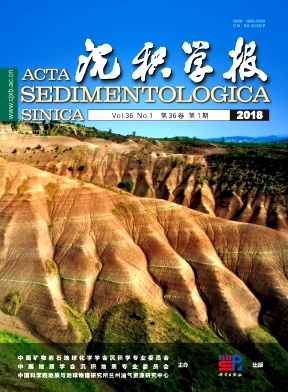The Depositional Diversity between Platform Margin and Platform Interior on the Late Ordovician Carbonate Rimmed-platform of Tazhong Area: A case study of qualitative and quantitative integrated microfacies analysis
doi: 10.3969/j.issn.1000-0550.2018.012
- Received Date: 2016-11-10
- Rev Recd Date: 2017-01-04
- Publish Date: 2018-02-10
-
Key words:
- carbonate microfacies analysis /
- grain-size analysis /
- platform margin /
- platform interior /
- carbonate sand shoal /
- Lianglitage Formation
Abstract: In order to reveal the deposition diversity between platform margin and platform interior on the Late Ordovician carbonate rimmed platform of Tazhong area, we made an integrated microfacies analysis from both qualitative and quantitative aspects by using core and thin section data of the Lianglitage Formation. The result show that nine types of microfacies (MF1~MF9) can be recognized, and each type of the grainstones which represents different type of carbonate sand shoals has distinct shape of grain-size accumulation curves. The platform margin is composed of several types of microfacies (MF1~MF4) indicating high-energy sand shoals that form reef-shoal complex together with platform margin reefs. The platform interior is composed of these types of microfacies (MF5~MF9) that representing medium-to low-energy lagoon and tidal flat deposits. Combining with the quantitative grain-size analysis results, these microfacies including bioclast intraclast grainstone (MF1), bioclast rudstone (MF2) and ooid grainstone (MF3) were deposited in foreshore environment, respectively indicating platform margin bioclast sand shoals, ooid sand shoals, and reef-front gravel shoals. The peloid grainstone (MF5) was deposited in the barrier platform interior that was dominated by moderate wave energy. The enchinoid packstone and floatstone (MF4) was deposited just at the back of platform reef forming bioclast sand shoal.
| Citation: | FU KunRong, HUANG LiLi, ZHU Yi, FENG XiangYiLan, ZHANG Qiao, GUAN XiaoLi, GAO Da. The Depositional Diversity between Platform Margin and Platform Interior on the Late Ordovician Carbonate Rimmed-platform of Tazhong Area: A case study of qualitative and quantitative integrated microfacies analysis[J]. Acta Sedimentologica Sinica, 2018, 36(1): 101-109. doi: 10.3969/j.issn.1000-0550.2018.012 |






 DownLoad:
DownLoad: